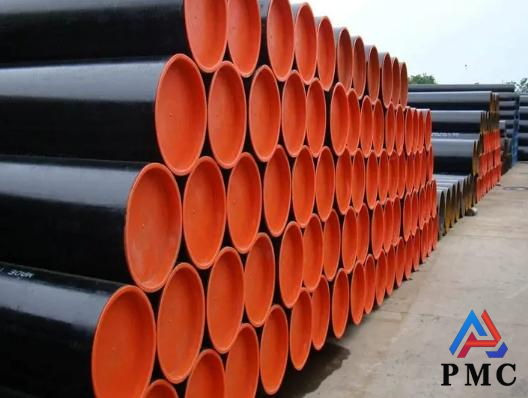
Temperature Control of Seamless Steel Tubes
Seamless tube is a long steel strip with a hollow cross-section and no seams around it. Its manufacturing process is special. Through perforation, rolling and other processes, the solid tube billet is transformed into a hollow tube, avoiding the weak points caused by the weld. The temperature problem of seamless steel tube involves many aspects, including the heating temperature during production, the working temperature during use, and the temperature control during heat treatment.
Heating temperature during production
The production of seamless steel pipes mainly adopts hot rolling or cold drawing (cold rolling) process. During the hot rolling process, the tube blank needs to be heated to a higher temperature for piercing and rolling.
Heating temperature range: Generally speaking, the heating temperature of hot-rolled seamless steel pipes is around 1100-1300°C. The specific heating temperature depends on factors such as steel type, tube size, and rolling process. For example, the production and manufacturing process of stainless steel seamless pipes is carried out at a temperature of 2200°F (about 1204°C).
Heating method: Commonly used heating methods include ring heating furnaces, walking beam heating furnaces, etc. These heating furnaces need to accurately control the uniformity of the temperature in the furnace to ensure uniform heating of the tube billet and avoid defects in the subsequent rolling process due to uneven temperature.
The importance of temperature control: The control of heating temperature is crucial to the quality of seamless steel pipes. If the heating temperature is too high, it will lead to defects such as coarse grains and overburning; if the heating temperature is too low, it will lead to increased deformation resistance and affect the smooth progress of the rolling process.

Working temperature during use
During the use of seamless steel pipes, their operating temperature range depends on the material of the steel pipe and the application environment.
General seamless carbon steel pipes: Generally suitable for room temperature or lower temperature environment.
Alloy steel seamless pipe: can withstand higher temperatures and pressures. For example, the seamless steel pipe used for high-pressure boilers has an operating temperature of over 500°C. The seamless steel pipe for high-pressure boilers (GB5310-2008) is used to manufacture the heating surface of water tube boilers with high pressure and above, and has a higher operating temperature.
Stainless steel seamless pipe: It has excellent high temperature resistance and can be used at higher temperatures. However, stainless steel may experience intergranular corrosion within a certain temperature range (e.g. 450-860°C). Therefore, it is necessary to select the appropriate steel grade according to the specific use environment. The application temperature of seamless steel pipe should not be maintained between 450 and 860°C, because within this temperature range, stainless steel will dilute the chromium element around the carbon element, thereby producing carbonized chromium and a chromium-poor area, changing the characteristics of the stainless steel material.
Seamless steel pipe for low temperature pipeline: suitable for low temperature environment, such as pipelines for transporting liquefied natural gas (natural gas pipeline pipe manufacturer - l360 pipeline pipe - L245 pipeline pipe - oil pipeline pipe), the working temperature can reach -196℃, seamless steel pipe for low temperature pipeline (GB/T18984-2003) is suitable for -45℃~-195℃ grade low temperature pressure vessel pipelines and low temperature heat exchanger pipelines.
Temperature control during heat treatment
Seamless steel pipes may need to be heat treated during the production process or subsequent processing to improve their mechanical properties or eliminate internal stress. Different heat treatment methods require different temperature controls:
1. Annealing: Heat the steel pipe to an appropriate temperature, keep it warm for a period of time, and then slowly cool it to eliminate internal stress, reduce hardness, and improve plasticity and toughness.
2. Normalizing: Heat the steel pipe to a certain range above the critical temperature, and then cool it in air to refine the grains and improve the mechanical properties. The normalizing temperature range is 727°C to 912°C or 30~50°C above the critical temperature of austenite.
3. Quenching: The steel pipe is heated to above the critical temperature and then cooled rapidly to obtain high hardness and high strength.
4. Tempering: Heat the quenched steel pipe to a lower temperature, keep it warm for a period of time and then cool it to reduce brittleness and increase toughness.
Read more: Seamless Steel Tube: Both Economic and Environmental Protection


